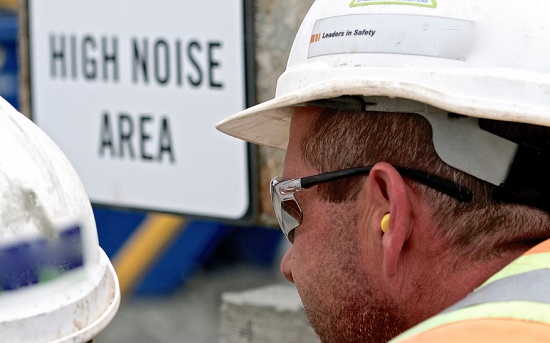
While researching the several factors that go into your career choice, we bet that your long-range hearing health is pretty low on the priority list—if it’s there at all. We get it.
And even though we don’t really think that your ability to hear in the future should dictate your career choice, we do think you should be knowledgeable of the risk—so that you can use appropriate hearing protection and adhere to the best habits to maintain your hearing.
As reported by the CDC, occupational hearing loss is one of the most prevalent work-related illnesses in the United States. Twenty-two million individuals are exposed to unsafe noise levels at work, and an estimated $242 million is spent annually on worker’s compensation for hearing loss.
So this isn’t a minor concern; the personal and social consequences are immense.
If you decide to follow one of the following eight career paths—or presently work in one—take extra precaution to take care of your hearing.
Below are 8 of the loudest industries.
1. Military – Practically all firearms can create 140 decibels (dB) of noise. This is far above the safety limit of 85 dB, and has the potential to generate instant and irreversible hearing damage. Explosions and other sounds of warfare add to the risk. This is why hearing loss and other hearing complications represent the most widespread injuries for veterans.
2. Music – Rock concerts can reach over 110 decibels, subjecting performers to hours of continuously damaging noise. That explains why research has shown that musicians are four times more likely to acquire noise-induced hearing loss—and 57 percent more likely to suffer from tinnitus—than other people.
3. Manufacturing – As reported by the Bureau of Labor Statistics, hearing loss is the most frequently documented work-related illness in manufacturing. Manufacturing equipment can reach decibel levels of well over 100.
4. Carpentry – As with manufacturing, carpenters use machinery that can reach dangerous decibel levels. A power saw alone can attain 110 dB.
5. Aviation – A jet take-off at 25 meters registers at about 140-150 decibels. The decibel level decreases as distance increases, but pilots and airport workers should protect against the noise.
6. Emergency Response – Ambulance and fire-engine sirens can generate decibel levels of over 130. In fact, a group of firefighters has recently taken legal action against a siren manufacturer after experiencing hearing loss on the job.
7. Farming – Some tractors and farming equipment can reach well over 100 decibels. Farm workers are advised to keep machinery running smoothly, to take routine breaks from the noise, and to wear hearing protection.
8. Racing – The noise of a single race car can reach over 120 decibels, and a race in full action can reach 140. Participants, fans, and employees at racing events are all at an increased risk for developing hearing loss.
Remember, continuous subjection to any sound above 85 decibels increases your risk for acquiring hearing loss. If you find yourself in a high-volume career, take these three precautions (if you can’t avoid the source of the noise):
- Increase your distance from the sound source when feasible
- Take periodic rest breaks from the sound to limit time of exposure
- Wear custom earplugs to limit volume
Taking these three easy steps (particularly # 3) will allow you to pursue the career you prefer without having to sacrifice your ability to hear in the future—because wearing earplugs now beats wearing hearing aids later.
